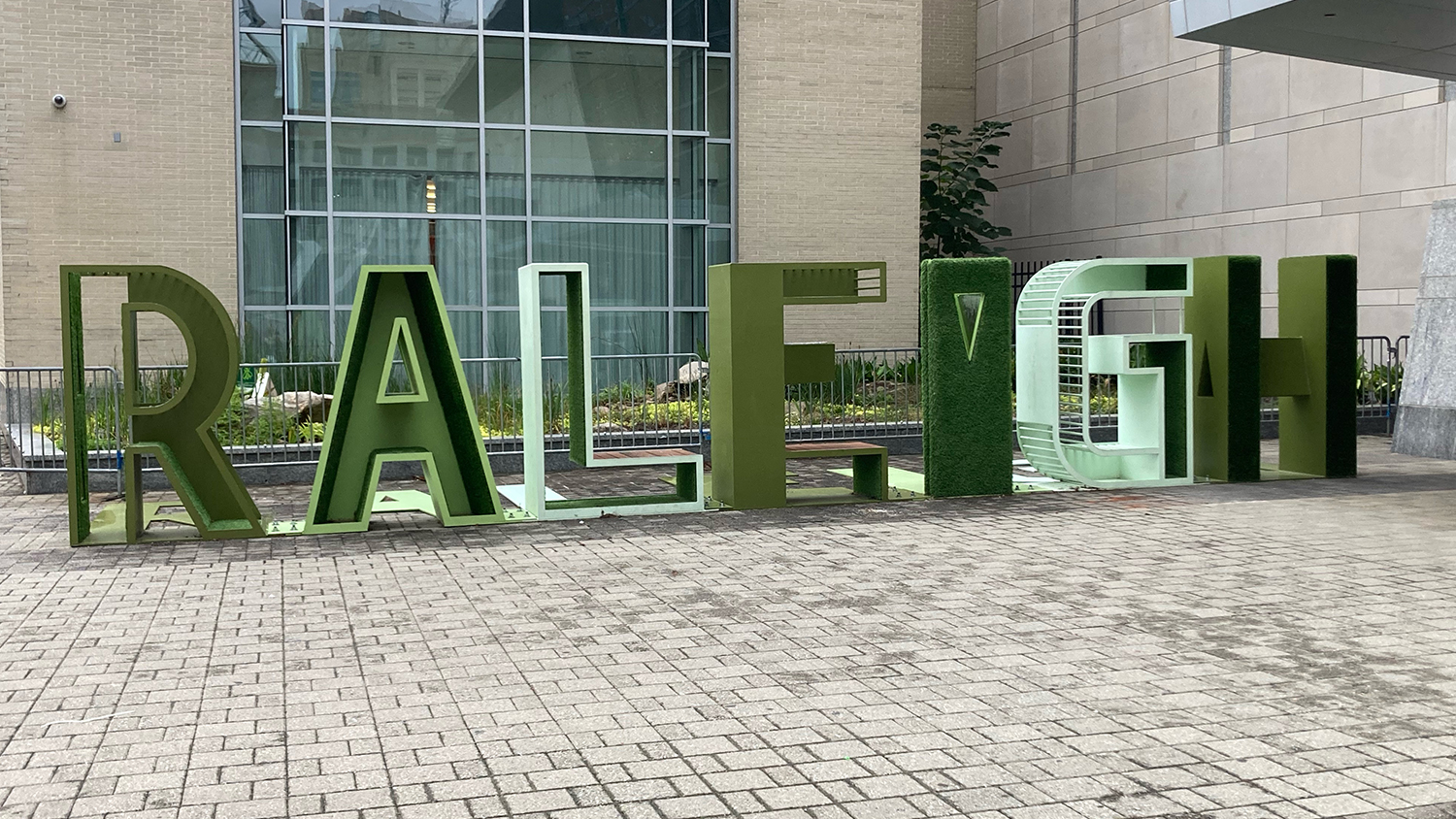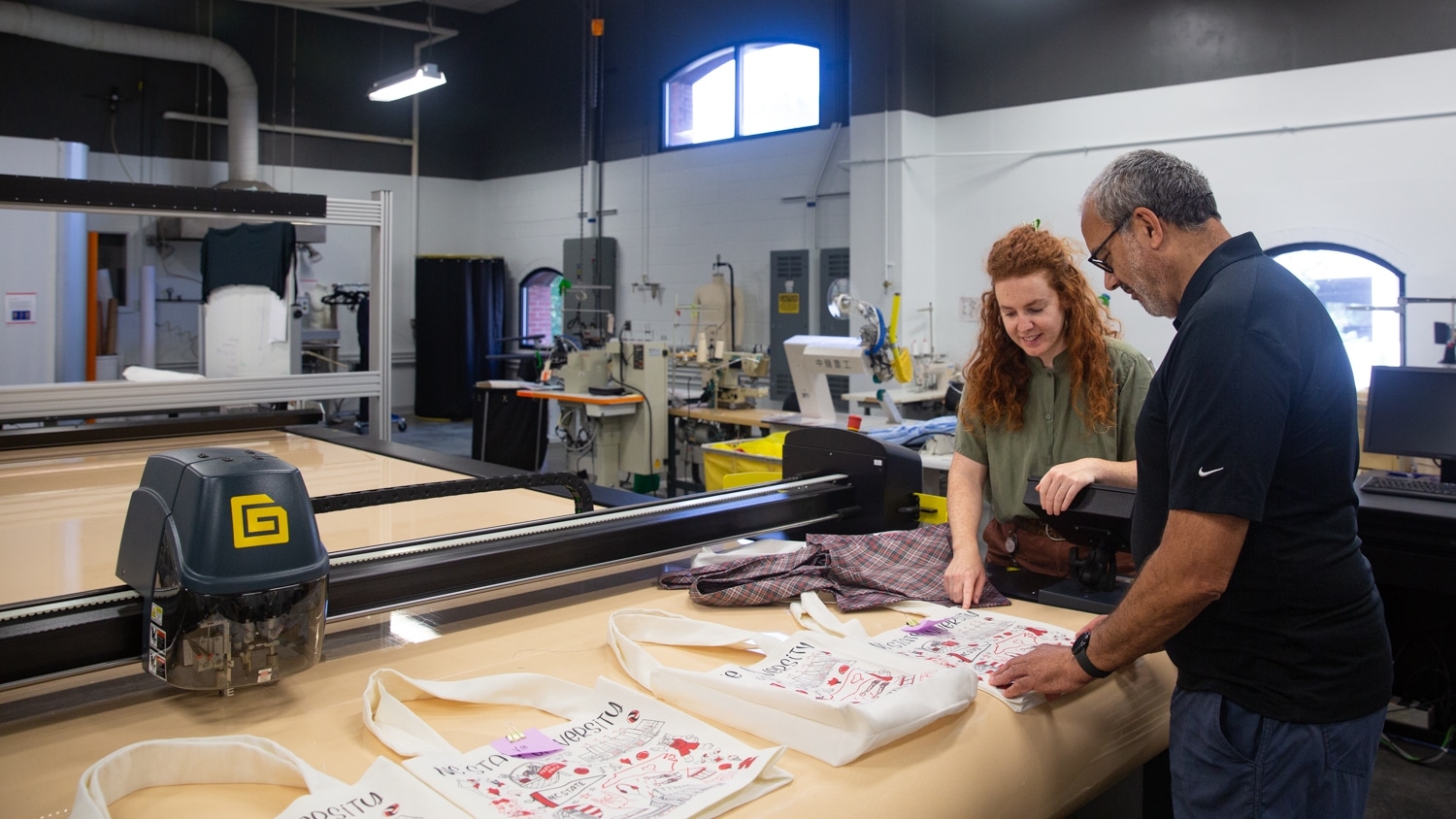Laura Riddle
Department of Biological and Agricultural Engineering
Summer is a time of growth and exploration, and for those in the North Carolina State University Department of Biological and Agricultural Engineering (BAE), this year’s summer was no exception. Working with the College of Engineering, the department organized a series of summer workshops to equip high school students with skills and first-hand experience in specific fields of interest. These workshops included Agricultural Robotics Systems, Bioenergy Systems and Ecological Engineering.
Agricultural Robotics Systems
The Agricultural Robotics Systems workshop, designed and led by Assistant Professor and Principle Investigator of the Automation and Robotics Lab Lirong Xiang, was the first robotics camp ever held at the university. Centered around the idea of harnessing robotics and automation to meet the increasing demands of agricultural production in the future, high school campers were introduced to advanced-level programming and robotic design.
Activities included building an obstacle avoidance robot using an ultrasonic sensor to address common agricultural processes and giving campers hands-on experience in robotic systems, electronics and sensing technologies.
“The concept is similar to what [the Automation and Robotics Lab] have implemented in our robot,” Xiang explains. “The ultrasonic sensor can tell the distance between the robot and the obstacle. The sensor tells this distance, and the program [campers] control generates algorithms based on this distance.”
In addition to building their own robotic systems, campers were allowed to operate some of the lab’s research tools like WolfDog manufactured by Unitree.
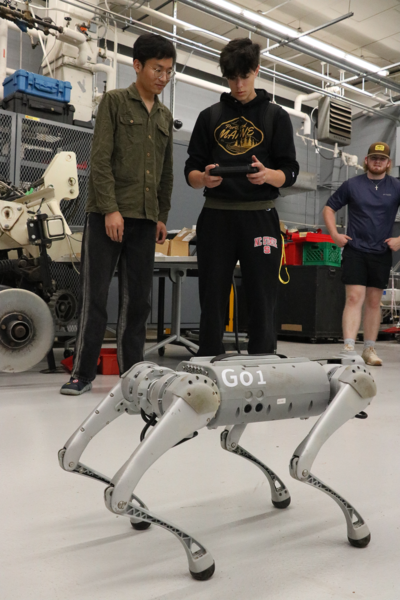
“We introduced both the hardware and software side and what we did with this robot and the purposes of why we developed this robot,” Xiang says. “For example, if you look at sorghum fields or soybean fields, you will see many row crops. But for a cucumber field, there are no crop rows, no clearance between rows. It’s kind of like a sea of plant canopy…So, in this case, we need to use a tool like the robotic dog to identify those spaces that are good to step on and avoid damaging the crops.”
The campers were also invited to Cotton Incorporated’s World Headquarters and Research Center located in Cary, North Carolina. BAE alumnus and Cotton Incorporated Agricultural and Environmental Research Division Director Ed Barnes led them on a tour of the facility and showed them some of the opportunities to use robotics and automation technologies in cotton production.
“I think [the campers] are super talented because we planned a task for the whole day and they were finished in a third of the time,” Xiang says. “This is my very first time leading a summer camp for high school students, and it has been both challenging and incredibly rewarding. I look forward to seeing what the future holds for these students.”
Bioenergy Systems
The Bioenergy Systems workshop was first offered by BAE in 2010. The camp combined engineering principles and biological sciences to design innovative solutions for real-world problems. From molecular levels to entire ecosystems, high school students explored the diverse aspects of biological engineering.
“We really do cover every single bioprocess that happens within the department,” says doctoral student and lead camp counselor Lily Lower.
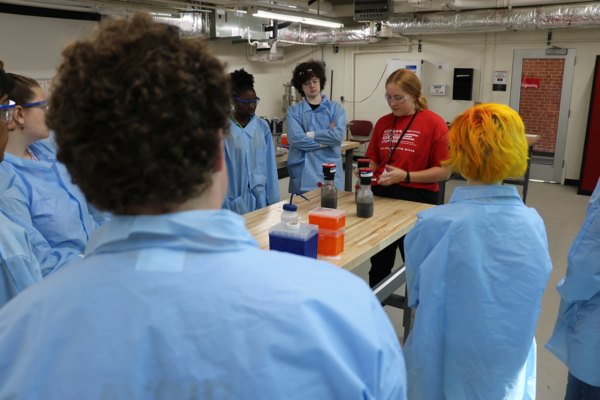
Activities for campers included transesterification experiments, which is the process of producing biodiesel from different types of oils, to anaerobic digestion of competing feedstocks. Campers monitor the experiments throughout the week to determine which one produces more biogas.
“We also integrate fun activities like putting M&M’s into the bomb calorimeter,” says Lower. “[The machine] “zaps” [the M&M] and calculates the heat of combustion for an M&M, and from there the students calculate the calories to check the package’s nutritional information. They always like that.”
The camp incorporates other forms of energy exploration within the department from other graduate researchers including doctoral student Vanessa Rodon Berrio and MS graduate student Nur-Al-Sarah Rafsan. With their experiments, campers get to examine aerobic fermentation using yeast to produce bioethanol and build supercapacitors with biochar that store and discharge electricity to turn on an LED light.
You cannot get out of Bioenergy Camp without getting dirty,” says Lower. “I think these hands-on activities have a greater impact because they get to do everything themselves.”
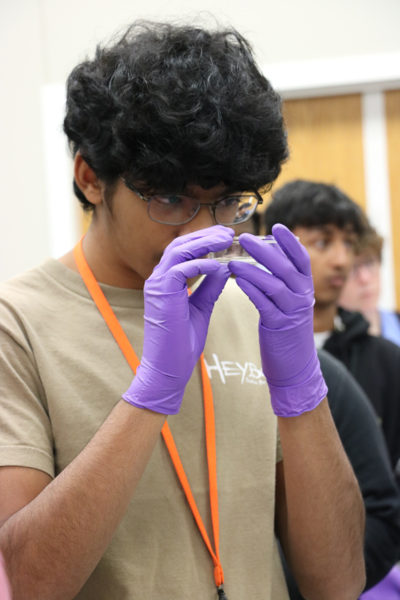
BAE Professor and Director of the Marine Aquaculture Research Center Steven Hall gave campers an aquaponics lesson and a tour of his fish lab inside Grinnells Animal Health Laboratories.
Campers also toured other parts of the university on Centennial Campus including the Analytical Instrumentation Facility (AIF), engineering facility Fitz-Woolard Hall, and the Biomanufacturing Training and Education Center (BTEC) where they were able to see commercial-level reactors used to produce products like pharmaceuticals.
Lower suggests high school students with an interest in sustainability and global energy systems would find the Bioenergy Systems workshop engaging. “The camp exposes students to a lot of areas within the university system, in addition to those in BAE. Our research is interdisciplinary and this camp demonstrates how we are all working together to find solutions.”
Ecological Engineering
The Ecological Engineering workshop was established in 2008 as the department’s first summer camp. Aimed at high school students with an interest in improving water and air quality while enhancing the sustainability of natural resources, the workshop focused on teaching engineering design to address environmental challenges.
“Ecological engineering is about improving our natural resources for the sake of the environment and society,” says Extension Associate Professor Barbara Doll. “Almost all of the camp takes [campers] out to both see and do a field component of that work.”
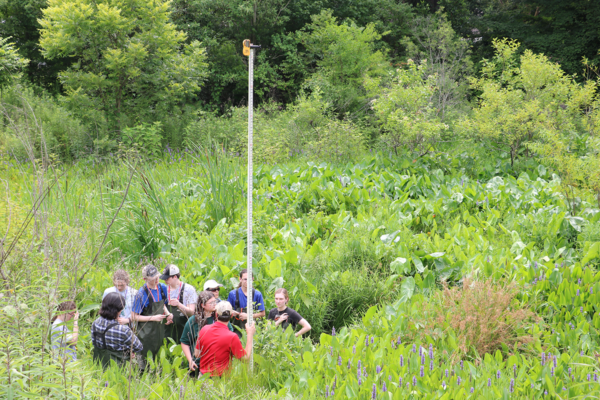
The program included four full days of activities including measuring the impact of stormwater treatment practices, assessing stream health, and examining water flow through natural and man-made systems.
One day, campers explored wetlands in Fred Fletcher Park in downtown Raleigh. “The campers get into the wetland and survey,” says William Neal Reynolds Distinguished Professor and Extension Specialist Bill Hunt. ”There’s lots of different vegetation in the wetland, and the plants grow in different water levels. And because they grow in different water depths, engineers design the wetland to have varied elevations to support a diversity of plants. We demonstrate how this can keep mosquito populations down.”
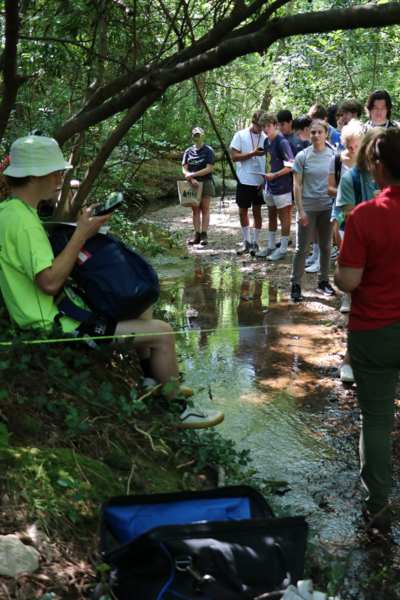
They also visit Rocky Branch, an urban creek that runs through the middle of the university’s campus, with Doll who led the Rocky Branch stream restoration project.
I explain to them how urban streams are degraded by development and why stream restoration is needed,” says Doll.
“There happens to be a [United States Geological Survey] gauge at the downstream end of Rocky Branch that gives us a record of flows. I teach the campers how to survey a cross-section of the channel geometry and calculate the size and the flow the channel can convey. We then compare this flow to the gauge record to determine if we sized the stream correctly. In other words, did we build the stream about the right size, or is it too big or too small? A healthy stable stream will flow out of its banks and onto a floodplain every one to two years. So, if the flow we calculate is larger than the two-year storm based on the gauge record, we know the channel was sized too large. This exercise helps to demonstrate the role of the ecological engineer by having the students check one element of a stream restoration design.”
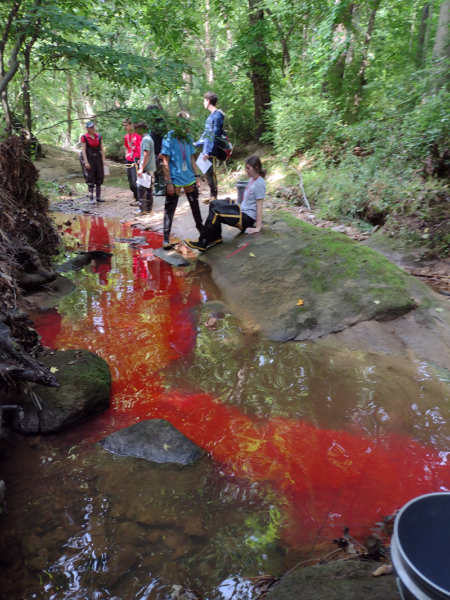
BAE Assistant Professor Lucie Guertault also took campers along Rocky Branch to simulate a stream tracer experiment to illustrate the different transport processes occurring in rivers and explain how contaminants are transported.
The dye mimics a contaminant and is colored, so it is easy to see the transport paths,” Guertault explains.
“Students were stationed at three sections downstream of the injection point and took water samples every two minutes. Measuring the concentration of the dye in the samples, [campers] plotted the breakthrough curves, the concentration of dye versus time for each station, and interpreted the shapes of the plots in light of the transport processes.”
The last field trip is a visit to Kure Beach to see a stormwater management project led by Professor and Department Extension Lead Mike Burchell in partnership with the North Carolina Department of Transportation. The system collects stormwater runoff and diverts it into a system of underground chambers beneath the dunes. As it is released from the chambers, bacteria are filtered through the sand, reducing the amount that reaches the ocean.
“The Kure Beach Dune Infiltration demonstration site provides the students with another example of how we design and test ecological engineering projects that work with the environment, minimize fossil-fuel inputs, and produce real-world results,” says Burchell. “We discuss the project goals, the economic importance of maintaining safe beaches for tourism, and finally project design and testing. The students then collect measurements of groundwater depths and salinity beneath the dunes to understand both how water flows from the chambers to the ocean and how the ocean is connected to the groundwater. The day is capped off with a bit of free time on the beach.”
BAE senior and American Society of Agricultural and Biological Engineers Chapter and Regional President Lindsay Dodson attended the Ecological Engineering workshop as a high school student.
I thought I knew what I wanted to study in college as a high schooler; however, that was not the case. After the weeklong camp, I was finally able to put a name to my passion – ecological engineering.
These annual summer workshops provide invaluable opportunities for students and faculty alike to engage in cutting-edge research, gain hands-on experience and cultivate essential skills for the future. By fostering collaboration and innovative thinking, these workshops equip and inspire the next generation of engineers and researchers, poised to tackle the challenges of tomorrow’s agricultural and environmental landscapes.
This post was originally published in the Department of Biological and Agricultural Engineering.


